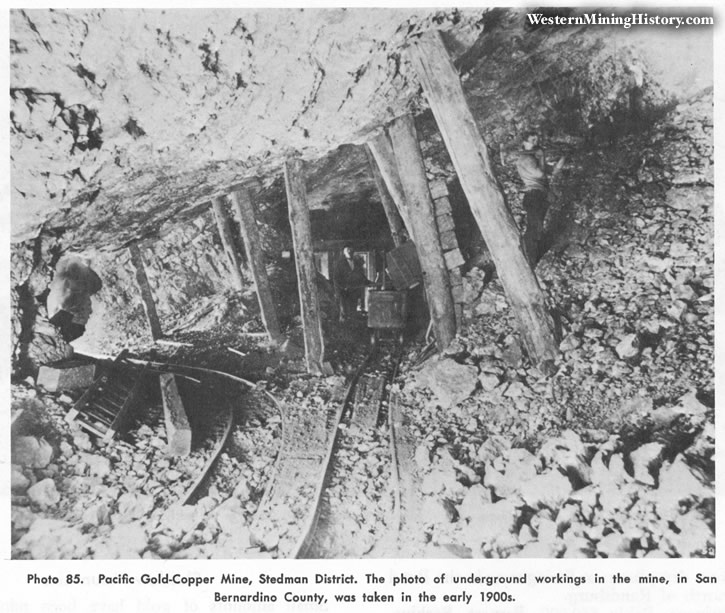Location and History
This district, in south-central San Bernardino County about eight miles south of Ludlow, has also been known as the Rochester or Buckeye mining district. Much of the production has been from the Bagdad-Chase or Pacific gold-copper mine. This mine has been the source of more than $6 million worth of gold.
The principal periods of mining activity were 1904 to 1910, when the Badgdad-Chase Mining Company shipped gold ore to a cyanide plant at Barstow, and 1910 to 1916, when Pacific Mines Corporation shipped gold-copper ore to Jerome, Arizona. During those years, Rochester, the principal town, and the mines were served by the Ludlow and Southern Railroad, which extended south from the Santa Fe Railroad at Ludlow. There was activity again during the 1930's and 1940's, and the area has been prospected since.
Geology and Ore Deposits
The ore-bearing zones are in quartz monzonite and rhyolite. The ore consists of cemented silicified breccia containing fine free gold and various copper minerals, chrysocolla being most abundant. The deposit at the Bagdad-Chase mine is eight to 20 feet thick and has been mined to a depth of 450 feet. Ore mined by Pacific Mines Corporation has an average grade of 1.82 percent copper, 0.35 ounce of gold and 1.5 ounces of silver per ton.

Bibliography
Cloudman, H C., 1919, San Bernardino County, Pacific Mine: California Min. Bur. Rept. 15, p. 790.
Tucker, W. B., and Sampson, R. J., 1930, San Bernardino County, Pacific Mine: California Div. Mines Rept. 26, pp. 218-219.
Wright, L. A., et al, 1953, San Bernardino County, Bagdad-Chase Mine: California Jour. Mines and Geology, vol. 49, pp. 71-72.